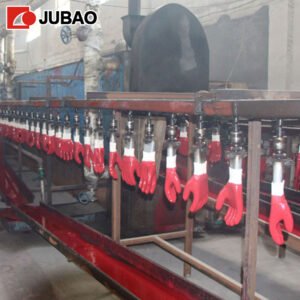How Big is the Rubber Glove Market?
Table of Contents
The rubber glove market has experienced unprecedented growth in recent years, transforming from a niche industrial product into a global essential commodity. Understanding the market’s magnitude requires examining multiple factors, from healthcare demands to industrial applications, and from regional variations to technological innovations.
Market Overview and Current Size
The global rubber glove market has reached remarkable proportions, valued at approximately $12-15 billion USD as of 2024. This substantial market size reflects the critical role rubber gloves play across multiple industries, particularly in healthcare, food service, and manufacturing sectors. The market encompasses various glove types, including natural rubber latex, nitrile, vinyl, and neoprene gloves, each serving distinct purposes and customer segments.
The COVID-19 pandemic served as a watershed moment for the industry, accelerating demand to unprecedented levels. During peak pandemic years, the market experienced growth rates exceeding 20% annually, far surpassing pre-pandemic projections. While demand has normalized somewhat post-pandemic, the market has stabilized at significantly higher levels than before 2020, indicating a permanent shift in consumption patterns and hygiene awareness.

Key Growth Drivers
Several fundamental factors continue to propel the rubber glove market forward. The healthcare sector remains the primary driver, consuming approximately 60-65% of global production. Rising healthcare expenditure worldwide, aging populations in developed nations, and expanding healthcare infrastructure in emerging markets all contribute to sustained demand growth. Hospitals, clinics, dental practices, and diagnostic laboratories require billions of gloves annually for routine procedures and patient care.
Heightened hygiene consciousness represents another powerful growth catalyst. The pandemic permanently altered consumer behavior and workplace safety standards across industries. Food processing facilities, restaurants, cleaning services, and personal care sectors now mandate glove usage more rigorously than ever before. Additionally, stringent occupational safety regulations in developed countries continue to expand glove usage requirements across industrial applications, from automotive manufacturing to chemical handling.
Market Segmentation
The market divides into several key segments based on material composition. Nitrile gloves have emerged as the fastest-growing segment, capturing approximately 45-50% of market share. Their superior puncture resistance, chemical compatibility, and latex-free composition make them ideal for medical and industrial applications. The nitrile segment continues to gain ground at the expense of natural rubber latex gloves, which now account for roughly 30-35% of the market.
Vinyl gloves occupy the economy segment, representing about 10-15% of market volume, primarily used in food service and light-duty applications. Specialty gloves, including neoprene and specialty polymer variants, comprise the remaining market share, serving niche applications requiring specific chemical resistance or specialized properties. The examination glove segment dominates overall volume, followed by surgical gloves and industrial protective gloves.
Regional Market Analysis
Geographically, the Asia-Pacific region dominates both production and consumption, accounting for over 70% of global manufacturing capacity. Malaysia, Thailand, China, and Vietnam serve as the world’s manufacturing powerhouses, with Malaysia alone producing approximately 65% of global rubber glove supply. These countries benefit from abundant natural rubber resources, established manufacturing expertise, and competitive labor costs.
North America and Europe represent the largest consumer markets, driven by stringent healthcare standards and robust regulatory frameworks. The United States imports billions of gloves annually, making it the single largest consumer market globally. European demand remains strong, supported by comprehensive occupational safety regulations and high healthcare spending. Meanwhile, emerging markets in Latin America, Middle East, and Africa show promising growth trajectories as healthcare infrastructure expands and safety awareness increases.
Competitive Landscape
The market features a mix of large multinational corporations and regional manufacturers. Major players include Top Glove, Hartalega, Supermax, Ansell, and Kossan Rubber Industries, collectively controlling significant market share. These industry leaders continue investing heavily in automation, capacity expansion, and technological innovation to maintain competitive advantages. The sector has witnessed considerable consolidation, with larger manufacturers acquiring smaller operations to achieve economies of scale.
Manufacturing efficiency and automation levels increasingly differentiate successful companies. Leading manufacturers have achieved remarkable production speeds, with modern lines producing over 50,000 gloves per hour. Investment in Industry 4.0 technologies, including artificial intelligence for quality control and predictive maintenance, separates market leaders from smaller competitors. Sustainability initiatives also gain prominence, with manufacturers developing biodegradable options and implementing eco-friendly production processes.
Future Outlook and Projections
Market analysts project continued growth through 2030, with compound annual growth rates (CAGR) estimated between 8-12%, potentially reaching $25-30 billion USD by 2030. Growth will be driven by expanding healthcare access in developing nations, aging demographics in developed countries, and persistent hygiene consciousness post-pandemic. Innovation in materials science promises new glove formulations with enhanced properties, including antimicrobial treatments and improved sustainability profiles.

However, the market faces challenges including raw material price volatility, supply chain complexities, and increasing environmental concerns regarding single-use plastic waste. Manufacturers increasingly focus on developing sustainable alternatives, including biodegradable materials and recycling programs. Regulatory landscapes continue evolving, with stricter quality standards and environmental compliance requirements shaping market dynamics. Companies that successfully navigate these challenges while maintaining quality and cost competitiveness will capture the greatest opportunities in this expanding market.
Partner With Industry Experts
We are professional rubber gloves machine manufacturers, dedicated to providing cutting-edge manufacturing solutions for the global rubber glove industry. Our advanced machinery helps businesses meet the growing demand with efficiency, quality, and reliability.
